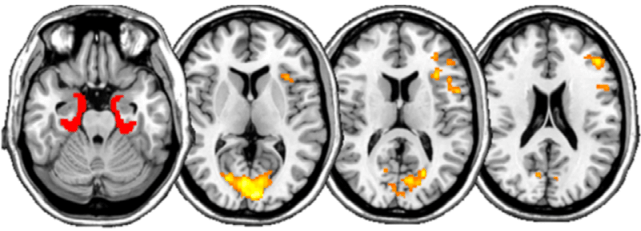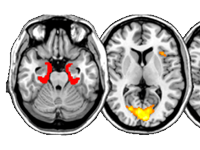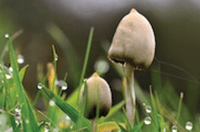
New evidence for a central role of music in psychedelic therapy
Music is considered an important component of psychedelic therapy for mood disorders and addiction, but little empirical research has been done to examine the nature of its therapeutic role. A new paper from our Beckley/Imperial study, on psilocybin therapy for treatment-resistant depression, reveals the ways in which subjective response to music is intensified under psychedelics, and demonstrates the influence of this synergistic effect on the therapeutic experience and clinical outcome.
Findings from Mendel Kaelen, a Beckley Foundation Research Fellow at Imperial College, and other members of the research team, including myself, indicate that it is not merely the drug effects in isolation, but rather an interaction between the drug and the music on subjective experience, that promotes positive therapeutic results.
Variables, such as whether or not the music was liked or disliked; was resonant or dissonant with the patient’s experience; and whether the patient was open, or resistant to the influence of the music were noted. These variables (liking, resonance and openness) positively predicted reductions in depression one week after psilocybin. They also influenced the extent to which patients reported having mystical experiences (a factor defined as the experience of unity, blissful emotionality and spirituality). Drug intensity, on the other end, showed no relation with depression scores one week later.

The illustration shows how a majority of participants experienced positive effects of the music during their psilocybin sessions (green spheres). Less welcomed influences where also reported, albeit less consistently (orange spheres).
During the therapy sessions, after receiving psilocybin, patients were encouraged to focus their attention inwards while lying down in a relaxed position and listening to a carefully designed music playlist. Two therapists were present on either side of the bed, and ‘checked-in’ with the patient approximately every 30-60 minutes, to obtain insight into how their subjective experience was unfolding, and to determine whether psychological support might be needed. Calming ambient music was played on entrance, but the actual session playlist was started on ingestion of psilocybin.
The design of the music-playlist was based on previously reported phases in psychedelic therapy sessions, where each phase is associated with a distinguishable set of psychological needs the music can serve (‘pre-onset’, ‘ascent’, ‘peak’, ‘descent’ or ‘re-entry’ and ‘return’). Composers included Arvo Part, Brian Eno and Max Richter. Music with strong evocative emotional sentiments was only played during peak, on the assumption that an important pre-requisite is for the individual to first feel calm and safe, and that more evocative music would enable an activation of autobiographical and therapeutically significant memories when played at peak.

Previous research from the Beckley/Imperial Psychedelic Research Programme found that LSD increases the flow of information between visual and memory centres of the brain.
One week after their second psilocybin-assisted therapy session, 19 patients with treatment-resistant depression were asked about their experiences with the music heard during their therapy sessions and the different ways in which the music had influenced their subjective experiences.
Patients reported that an intensification of their emotions and mental imagery were stimulated when under the influence of psilocybin. Music appeared to act as a guide, leading the listener to different psychological places, as exemplified by the following quote from a study participant:
“I feel the music in large part drove a lot of the experience. Under the influence of psilocybin, the music absolutely takes over. Normally when I hear a piece of sad music, or happy music I respond through choice… but under psilocybin I felt almost that I had no choice but to go with the music. […] I did feel I was being held. And it did feel like the music opened [me] up to grief, and I just was very happy for that to happen. It wasn’t particularly pleasant in any way, but extraordinarily powerful.”
It is clear from these findings that increasing our knowledge of the appropriate use of music in psychedelic therapy is vital, and that further research is needed in order to support and predict the mediating potential of music in the development of this field of treatment.
Mendel Kaelen’s paper, The hidden therapist: Evidence for a central role of music in psychedelic therapy, including outcomes and playlist, can be downloaded here.
Amanda Feilding
Podcast
- All
Links
- All
Support
- All
BIPRP
- All
Science Talk
- All
Amanda's Talks
- All
- Video Talk
- Featured
- 2016 Onwards
- 2011-2015
- 2010 and Earlier
- Science Talk
- Policy Talk
One-pager
- All
Music
- All
Amanda Feilding
- All
Events
- All
Highlights
- All
Psilocybin for Depression
- All
Current
- All
Category
- All
- Science
- Policy
- Culture
Substance/Method
- All
- Opiates
- Novel Psychoactive Substances
- Meditation
- Trepanation
- LSD
- Psilocybin
- Cannabis/cannabinoids
- Ayahuasca/DMT
- Coca/Cocaine
- MDMA
Collaboration
- All
- Beckley/Brazil Research Programme
- Beckley/Maastricht Research Programme
- Exeter University
- ICEERS
- Beckley/Sant Pau Research Programme
- University College London
- New York University
- Cardiff University
- Madrid Computense University
- Ethnobotanicals Research Programme
- Freiburg University
- Medical Office for Psychiatry and Psychotherapy, Solothurn
- Beckley/Sechenov Institute Research programme
- Hannover Medical School
- Beckley/Imperial Research Programme
- King's College London
- Johns Hopkins University
Clinical Application
- All
- Depression
- Addictions
- Anxiety
- Psychosis
- PTSD
- Cancer
- Cluster Headaches
Policy Focus
- All
- Policy Reports
- Advisory Work
- Seminar Series
- Advocacy/Campaigns
Type of publication
- All
- Original research
- Report
- Review
- Opinion/Correspondence
- Book
- Book chapter
- Conference abstract
- Petition/campaign
Search type



